New Mexico is often overlooked when it comes to states with amazing plants and animals. However, the entire state is rife with fantastic geological formations and creatures. While New Mexico is certainly a herpetologist’s dream, it’s also a great place to find spiders. Some of them may be similar to one another and others may frequently appear on other states’ lists of largest spiders. In this article, we’re going to explore 5 of the biggest spiders in New Mexico.
We’ll show you how big they are, where you’re most likely to find them, and if they pose any threat to humans! By the time we’re done, you’ll know which big ones you need to worry about!
1. Chiricahuan Grey Tarantula
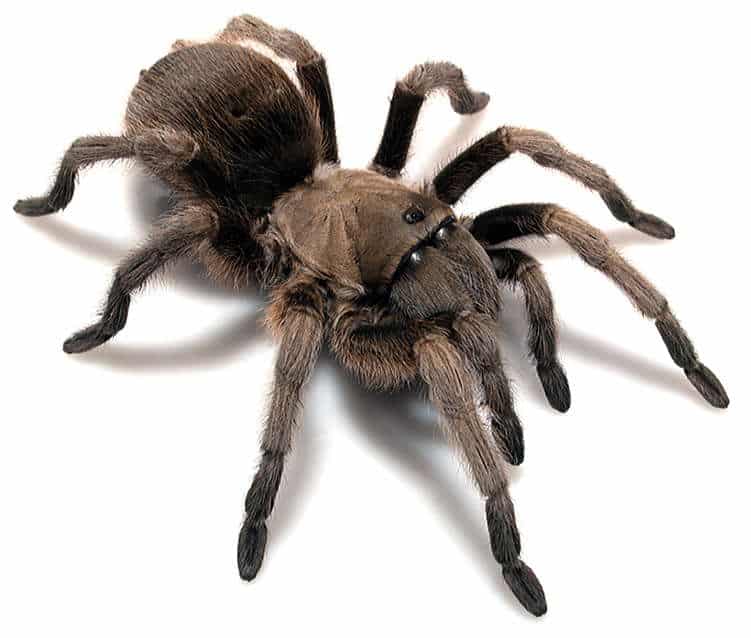
The Chiricahuan grey tarantula can measure up to six inches long.
©Chris A. Hamilton, Brent E. Hendrixson, Jason E. Bond / Creative Commons – License
| Scientific Name | Size | Danger to Humans |
|---|---|---|
| Aphonopelma chiricahua | 4-6 inches | May cause pain and swelling, but not that harmful to humans. |
The Chiricahuan grey tarantula is either the largest spider in New Mexico or tied for that record. This spider can get very big, measuring up to 6 inches from the farthest points on its legs.
As its name suggests, the spider integrates grey into its coloring. This hairy spider has a black body, grey hair on most of its legs and cephalothorax, and reddish-orange hairs on its abdomen.
Although this spider is imposing, it’s not dangerous to humans. Their bite will cause swelling and pain, but it most likely will not inflict lasting harm.
The chances are good that you won’t see this spider. It often burrows during the day and hunts at night.
2. Giant Crab Spider
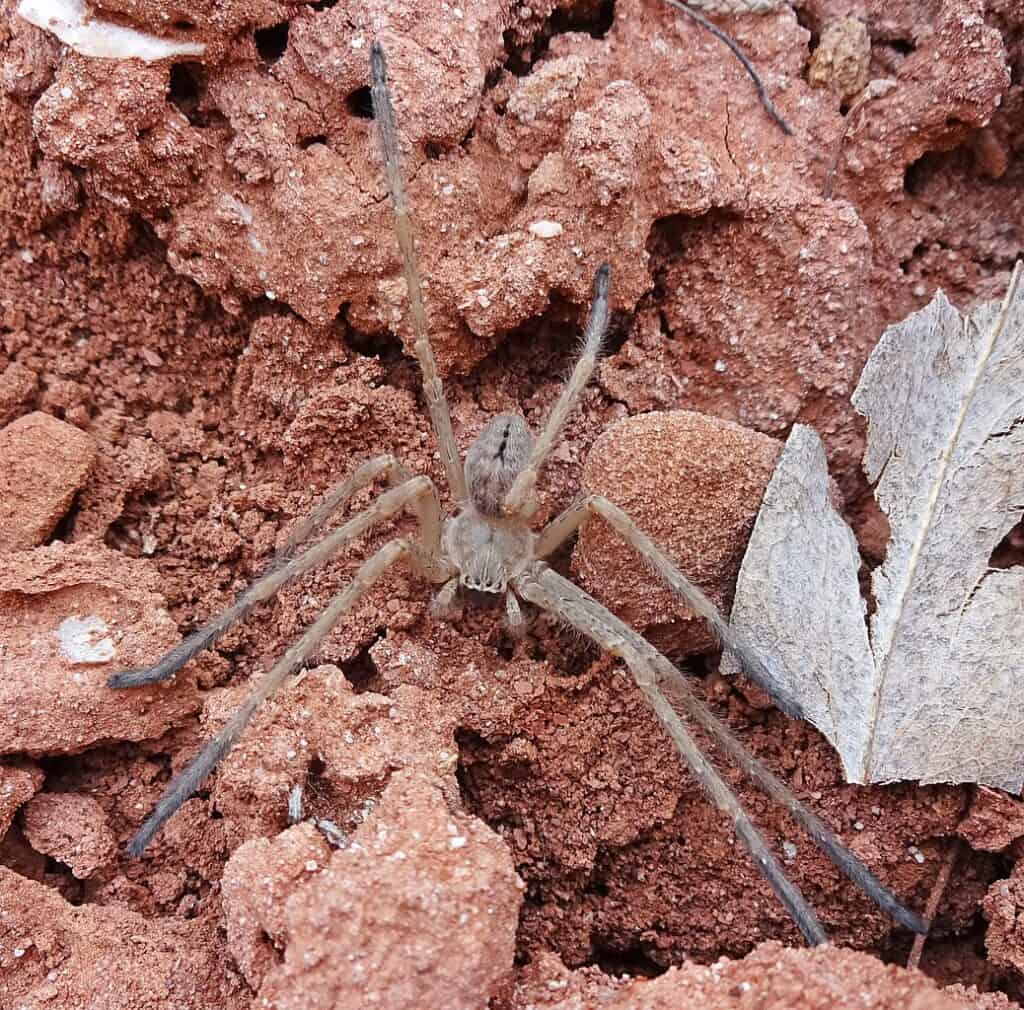
The giant crab spider is known for its long legs.
©Andrey Zharkikh from Salt Lake City, USA / CC BY 2.0, via Wikimedia Commons – License
| Scientific Name | Size | Danger to Humans |
|---|---|---|
| Olios giganteus | 3-4 inches, perhaps up to 6 inches | Delivers a painful bite, but it doesn’t do lasting harm. |
The giant crab spider is also called a huntsman spider, and this one might be as big or larger than the Chiricahuan grey tarantula. This spider is said to measure between 3 and 4 inches. Yet, some anecdotal evidence claims that they can measure up to 6 inches.
These spiders are hard to pick out in the desert. They are mostly tan with dark brown and black mixed in, especially on the legs. Their abdomen and cephalothorax are tan, but they often feature a black line running down the middle.
These spiders are confused for wolf spiders and sometimes tarantulas owing to their size. However, their bite is not going to do any lasting harm to you. If you do manage to get bitten by one of these long-legged spiders, it will hurt a bit but nothing more.
3. Tucson Bronze Tarantula
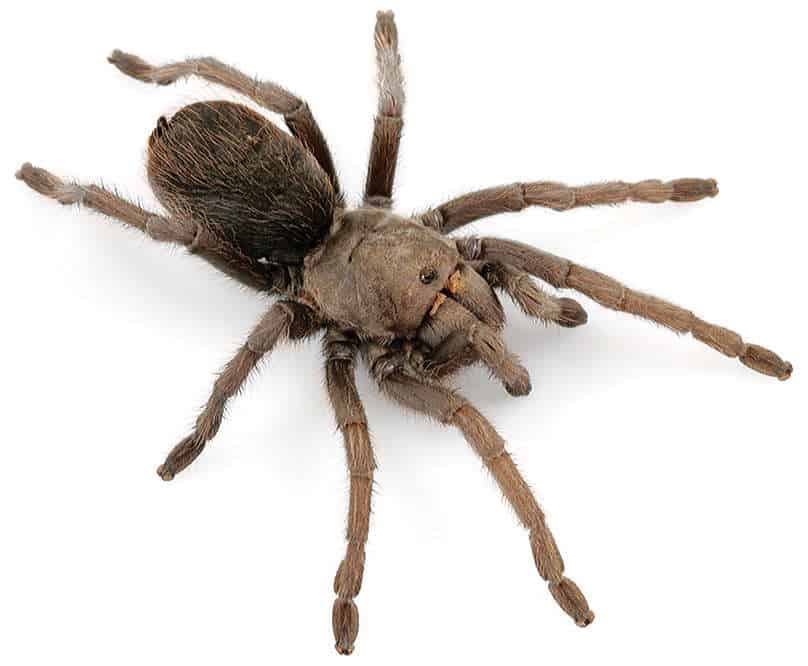
Female Tucson bronze tarantulas can live up to 15 years.
©Chris A. Hamilton, Brent E. Hendrixson, Jason E. Bond / Creative Commons – License
| Scientific Name | Size | Danger to Humans |
|---|---|---|
| Aphonopelma vorhiesi | 3-5 inches | A bite may cause pain at the site, but not very harmful. |
The Tucson bronze tarantula is found in Arizona. However, it’s also found across the border in New Mexico. Like the Chiricahuan grey tarantula, this spider gets to be rather big, upwards of 5 inches. Also, they are burrowers that stay hidden throughout most of their lives, especially during the day.
That means you have a small chance of seeing or interacting with these spiders throughout your day. If you do come across one, give it space. They do not like being handled and will bite if provoked. That being said, their bite is painful but not harmful. You can find these spiders under logs, homes, and rocks, and it’s best to leave them alone.
As their name suggests, these tarantulas have bronze hairs jutting out from their abdomen, but they are mostly black or tan on the rest of their bodies. They are not easy to spot, especially at night.
4. Carolina Wolf Spider
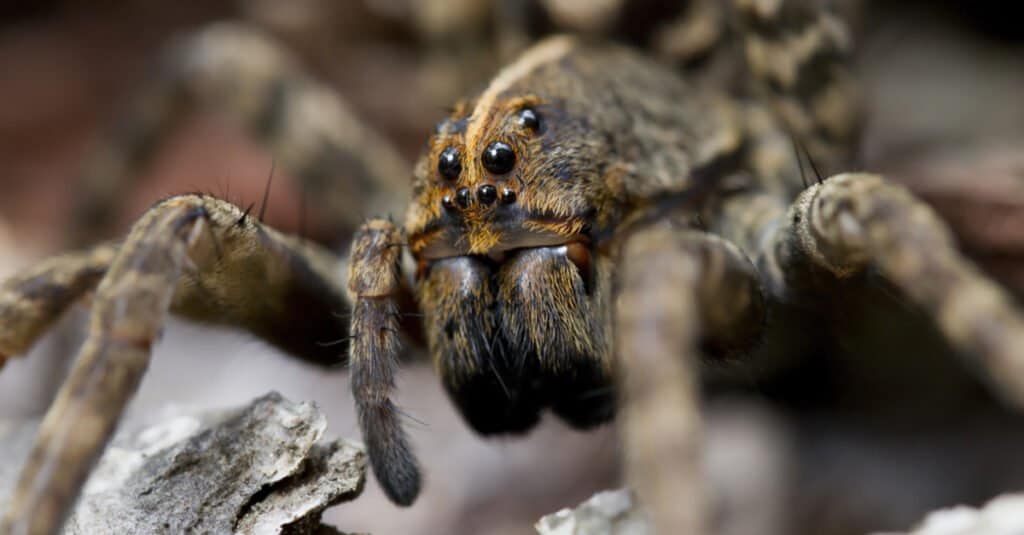
This wolf spider can reach nearly 50 millimeters long with its legs extended.
©Will E. Davis/Shutterstock.com
| Scientific Name | Size | Danger to Humans |
|---|---|---|
| Hogna carolinensis | 2-4 inches | The bite causes local pain and swelling. |
The Carolina wolf spider is another potentially large spider that can grow up to 4 inches from the farthest points on its legs. Many people confuse this spider with a tarantula since it has a bulbous abdomen and hair. However, the thing that makes them seem most similar to tarantulas is that they carry their young on their backs.
That makes their abdomen appear abnormally large. It’s also quite a potentially frightening sight! These spiders can range in color, but they are usually dark with gray and black making up most of their colors. However, they may also be white and tan, too.
Often, light-colored Carolina wolf spiders will have a black mark on their cephalothorax and a darker abdomen with a light color running down the middle. These spiders can bite humans if they’re bothered. Their bites cause pain and swelling, but the effects subside somewhat quickly.
5. Hobo Spider
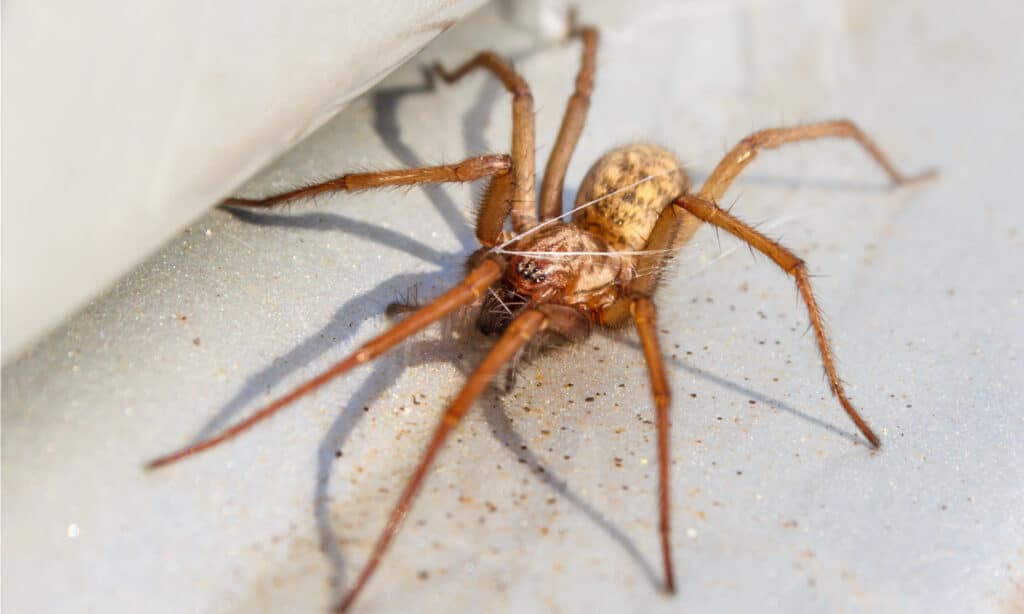
The hobo spider has a bad reputation that is apparently unearned.
©Andrew Balcombe/Shutterstock.com
| Scientific Name | Size | Danger to Humans |
|---|---|---|
| Eratigena agrestis | 1-2.5 inches | May cause mild pain, headache, nausea, and tiredness. |
The hobo spider is a funnel web builder that enjoys setting up nets in fields. It builds a funnel-shaped web and waits in the back for a disturbance. If something triggers the web, then it runs out to meet it and finish it off as a meal.
Hobo spiders are usually black, brown, and tan. Often, the abdomen is darker than the cephalothorax and features a light stripe that runs down it. They’re often spotted indoors, but they would rather spend time outdoors but still close to man-made structures where insects tend to come and go.
Hobo spiders were once considered among the most dangerous spiders in North America. But not anymore. They are not as dangerous as they were thought to be. However, new information about their venom and its impact on human beings is being re-examined. Their bite can still cause pain, nausea, headache, and tiredness in rare cases.
Yet, these spiders are not even listed among the species of concern for the CDC. In short, if you see them, leave them alone.
Now that you know the biggest spiders in New Mexico, you should know that a few of them pose a real danger to you. Instead of worrying about them, be on the lookout for any truly dangerous species in North America, like the black widow and brown recluse.
Summary of the 5 Biggest Spiders in New Mexico
| Rank | Spider | Size |
|---|---|---|
| 1 | Chiricahuan Grey Tarantula | 4-6 inches |
| 2 | Giant Crab Spider | 3-6 inches |
| 3 | Tucson Bronze Tarantula | 3-5 inches |
| 4 | Carolina Wolf Spider | 2-4 inches |
| 5 | Hobo Spider | 1-2.5 inches |
The photo featured at the top of this post is © SNEHIT PHOTO/Shutterstock.com
Thank you for reading! Have some feedback for us? Contact the AZ Animals editorial team.






